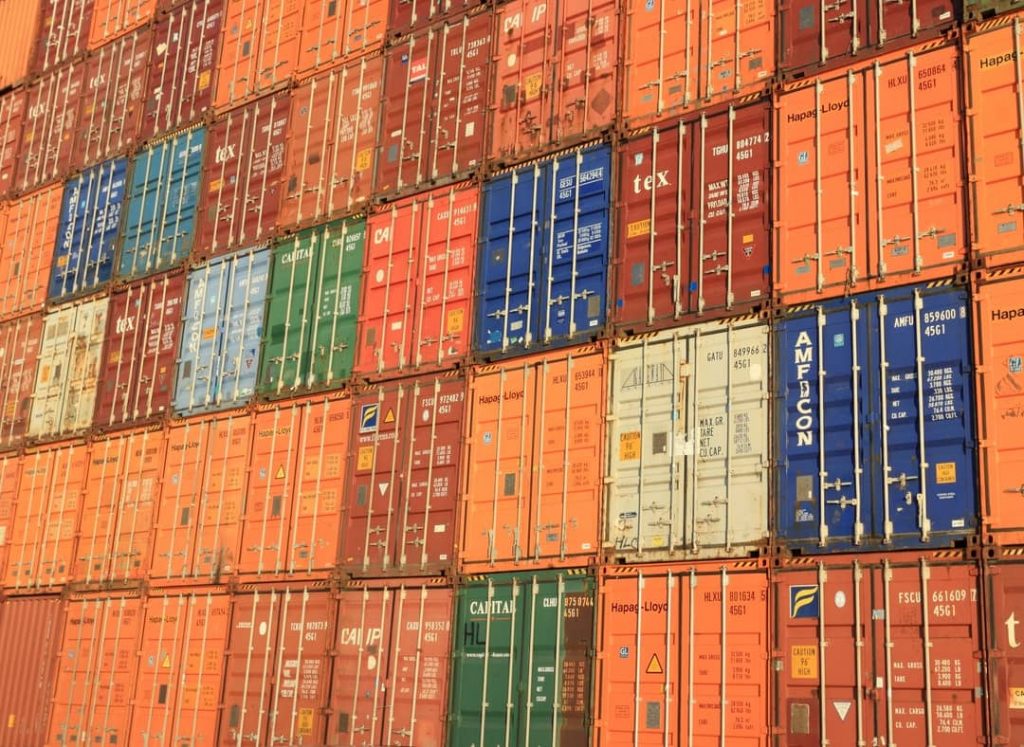Blog
Find articles that matter. From trading to shipping, trends to valuable goods, you can deep dive into everything you need.
Latest Posts
Blog
Turkey is a rising nation with a strategic location that connects Europe and Asia. Turkey ranks in the top 30 countries in the world in terms of exports and imports. Considering the import processes, people generally want to have all the information about it. Because every knowledge gained will help you with any problems that may arise. The more you know the rules and the functioning of the necessary institutions, the fewer problems you will have.
Natural or legal persons and institutions that are new to importing first focus on the following question: "How to import goods from Turkey?"
Answering this question has different features for each country. Because international agreements and contracts are different. Moreover, the product registration of each country or the documents that must be collected while bringing the product to the country will differ. However, in this case, there are steps that are general and must be applied. What should you do when importing goods from Turkey? Let's examine it together.
What is the General Procedure for Import?
To summarize the import process briefly, it is the exchange of products between the importer and exporter depending on the product contract. The importer should apply to reliable companies for the products to be ordered and should calculate the transportation process well. Of course, the process is not just about these. General procedures are important.
For each commodity that enters and exits the customs area, a summary declaration must be given to the Customs Administration. The products are temporarily stored once they are presented to customs until they are subjected to customs-approved treatment or usage, and are defined in this context. Temporarily stored commodities can only be kept in locations approved by customs administrations and under the criteria set by these authorities. For products that will leave customs later, a free zone designation statement is required.
Who can Import Goods from Turkey?
Imports are permitted for individuals and institutions who meet the requirements set forth in Article 8 of the Import Regime Decree. Import transactions can be carried out by real and legal people having tax numbers issued in accordance with the Tax Procedure Law, as well as person partnerships permitted to make legal savings in accordance with the current regulations.
It is also important that the product you want to import from Turkey is legal and meets the conditions both in your country and in Turkey. For this, you need to import products that will not contradict the benefit of the country. At this stage, you need to check both the product code from the official sites of your country and the institutions in Turkey.
What Are the Taxes for the Products to be Imported?
Each product has a commodity code. Knowing this code is important for every importer. Moreover, tax brackets may vary depending on the type of your product. You need to prepare transportation tax and documents, copies of contracts, and declarations of mutual customs.
Products are generally listed under five headings by tax and type.
- List I Agricultural products
- List II Industrial products,
- List III Processed agricultural products,
- List IV Fish and aquaculture,
- List V Suspension products.
In the given list, customs duty is applied as 0%, provided that it is used only in civil aircraft. To explain the goods to which Value Added Tax is applied; 1% is valid in List No. 1, and 8% VAT is applied in List No. 2. VAT of goods other than these lists is applied as 18%. The consumption tax to be paid at the time of import is valid for tobacco, fuels, electronic goods and cosmetics.
Documentation and Legislation
The legislation and import regime to which the goods are subject differ according to their characteristics. However, as a broad framework, general information on product imports can be found on the Ministry of Economy's legislation website. In addition, you must apply to the relevant institution of the country in which you are located.
Although each product is subject to different features and document requirements, documents related to the goods such as inspection certificate, control certificate, health certificate, analysis report, and CE certificate must be prepared. It will be useful to obtain information from the necessary institutions about which of these documents are required.
Which Products are Imported from Turkey?
Although Turkey is the most preferred country for importing agricultural products with its geographical location, it shines in many sectors. Especially in the electronic products and clothing sector, its progressive horizon is stimulating the shopping markets in other countries.
With the corona epidemic, Turkey's products were added to the increase, especially in the health products and pharmaceutical sector. In this respect, if you need to sort on a general basis, you can import any product from Turkey. However, agricultural products and local delicacies are in the first place. Industrial products and electronics are next, followed by toys. The import rate of health care products from Turkey has also increased gradually.
As a result, you can import products in every lane, from electronic parts that have been produced and developed to the food and beverage industry.
Reach the Goods You Want with Turkish Goods
It can be challenging to handle the process reliably, as the processes of importing products are difficult as well as transportation. Turkish Goods safely carries all kinds of products between exporters and importers. For Turkish Goods, safety and quality are a discipline. It acts by carrying out meticulous work at every stage, from the quality packaging processes of the products to their quality controls. You will not get tired while searching for products that fit your business plans and budget.
Moreover, you can access the necessary information in the bank transactions and contracts section during product shopping. You can browse Turkish Goods to buy the product you want safely, in the category you want. You can find the real meaning of quality with service in 13 languages and fast turnaround service within 48 hours. The aim of Turkish Goods is to bring the import and export to the most distinguished position with the quality of the storage systems in the sea, air, and land transportation.
Shipping forms the backbone of trade. It is of great importance for all the importers and exporters of the world. Every stage should work flawlessly. The products should be delivered from one point to another without any damage. Especially maritime transport has a significant share in world trade today. If you are going to do business in this field, it is useful to know some terms. One of these terms is Free on Board (FOB).
Free on Board shipping is one of the delivery methods used only in the maritime transportation industry. FOB indicates all the responsibility of the firm or person who will supply the goods until they carry the goods to the deck of the ship to which they are to be transported. FOB shipping refers to the transfer of responsibility and ownership of goods from a seller to a buyer. It's used to eliminate misunderstandings between sellers and buyers concerning ownership transfer points and shipping charges.
FOB shipping is the seller's way of delivering the goods after they are loaded on the designated ship at the designated port. In this term, the seller must have completed all export customs procedures for the goods.
When a shipment is designated as FOB, the seller considers the transaction complete as soon as the goods leave their warehouse. The buyer is responsible for the delivery fees. They own the goods in transit to their warehouse.
Use of FOB
FOB is only used in a limited number of international and domestic shipping settings. It is used by companies that ship goods internationally by rivers, canals, and sea freight. The use of FOB for road freight is prohibited by the International Chamber of Commerce (ICC).
Costs of FOB
The costs of FOB shipping can be listed as follows.
- Transport costs to the shipping port
- The costs of loading goods on a transport ship
- Sea freight shipping costs
- Unloading costs
- Insurance costs
- Shipping costs of goods from the port of origin to the port of destination
FOB Shipping Categories
FOB is divided into two groups because the items must be insured by either the buyer or the seller at each stage of the shipping process.
FOB Origin
If an order is "FOB origin", ownership goes to the buyer the moment it leaves the seller. If transportation is needed to bring the goods to the buyer, the buyer must contract for it and pay for it.
The buyer is responsible for the following when the order is FOB origin.
- Freight charge
- Fees associated with transportation damages
- Filing of insurance claims for damaged products
- Control of the title and goods
FOB Destination
In "FOB destination", when items are delivered to the buyer, the buyer takes ownership. The seller is in charge of organizing and paying for the buyer's shipping. On the other hand, the seller can claim these costs from the buyer. The seller is also liable for any damage that occurs while the item is being transported to the buyer.
A FOB destination shipper has the following responsibilities.
- The title and control of the goods
- Freight charges
- Keeping the product's worth, including completing insurance claims for any goods that were damaged during shipment
- Choosing a carrier and a route
To summarize, in FOB destination, the shipper must pay for the freight charges, while in FOB origin, the receiver is responsible. But companies can make changes to the contract as needed. There may also be differences in payment terms.

Related Shipping Terms
Some shipping terms are used with FOB to clarify payment status and responsibilities.
- Freight Prepaid and Allowed: In this category, the seller commits to cover all shipping costs. These costs are included in the pre-shipment payment.
- Prepaid and Add: It means that the seller initially pays the freight charges. Moreover, the seller attaches an invoice for the buyer to reimburse.
- Freight Collect: The buyer is responsible for all shipping costs.
- Collect and Add: The buyer is responsible for freight costs, which are deducted from the invoice.
- Prepaid: As the name suggests, prepaid means that the seller has paid the freight charges in advance.
Tax Compliance
If you're in a place that charges sales tax on shipping, FOB will be beneficial for you. For FOB origin cargoes, the buyer usually contracts with the sender. They pay the freight costs directly to you. Places, where freight charges are paid directly, are exempt from sales tax. Thus, the buyer will generally not have to pay sales tax on shipping costs.
FOB Shipping vs. FOB Destination
There are two differences between the FOB shipping point and FOB destination. The party paying the shipping costs and the time of transfer of ownership from the seller to the buyer separate these two terms.
Under the FOB shipping point, it is the buyer who pays the shipping cost. The buyer becomes the owner after shipment.
In the FOB destination, the seller pays the shipping costs. Also, unlike the shipping point, the seller retains ownership until delivery.
Advantages of FOB Shipping
FOB shipping is frequently chosen since it is the most cost-effective option. Buyers generally do not pay large costs under FOB contracts. They also have more flexibility and control over terms, cost, freight forwarding planning, and other factors.
Risks of FOB Shipping
If you buy goods with FOB from another country, you are responsible for the risks and costs of transportation from the moment goods are loaded onto a ship. As goods are loaded, you are liable for any loss, damage, or additional expenditures.
Why Is FOB a Big Deal?
Consequently, FOB is essential for determining who is liable for a shipment's safe delivery. It's also a way to find out who owns the items during the shipping process. It is also useful for accountants, who can record the time a transaction happens depending on the FOB location of delivery.
You may want to keep costs down by making your own shipping arrangements with FOB. But you have to make sure that you can cover the responsibility if something goes wrong.
Letter of credit payment is a commonly used payment method in the financial world. Today, this method is frequently preferred in foreign trade. In international trade, insecurity may arise if the importer and exporter do not know each other very well. The exporter wants to collect the price of the products he sells. On the other hand, the importer aims to receive the goods on time. This is where the letter of credit comes into play.
This method is a type of payment that provides assurance to both parties. Thus, communication difficulties due to different time zones and long distances are eliminated. In the letter of credit, the payment is secured by the bank. You can safely use a letter of credit in your foreign trade transactions. If you have questions about the letter of credit, you will find the answers you are looking for in this article.
A letter of credit is a contract in which the foreign buyer's bank undertakes to pay after the exporter sends the goods and submits the necessary documents to the exporter's bank as proof. Banks or other financial institutions mediate letters of credit transactions.
Exporters and importers are protected by letters of credit. They can assist you in gaining new business in overseas markets. This means that the exporter is guaranteed payment while the importer is given the proper payment conditions.
Reduced Risks
Let's say you are an importer. If you use a letter of credit, you can only pay for goods after the supplier has proven that the goods have been shipped. You also do not need to pay any advances or deposits to the exporter. So, you can protect your cash flow as well. Moreover, a letter of credit shows your creditworthiness. Therefore, it provides instant credibility for you.
For exporters, on the other hand, a letter of credit is like insurance. If the price of the goods sent by the exporter has not been paid by the buyer, the letter of credit payment works like insurance. In such a case, the financial institution will cover the amount. Therefore, a letter of credit is like a shield against legal risks. Because as long as the exporter meets the delivery conditions, his payment is guaranteed. Letter of credit provides another important advantage to exporters. It can be shown as collateral in working capital loans for exporters.
Parties in Letter of Credit Payment
The beneficiary is an exporter. In other words, it is the party that supplies or sells the goods.
The applicant is the buyer. It is the party that requests the bank to create a letter of credit.
The issuing bank is the bank that creates the letter of credit upon the request of the buyer.
The advising bank is located in the exporter's country and notifies the exporter of the letter of credit.
How Does It Work?
The International Chamber of Commerce's (ICC) UCP 600 and ISBP 745 regulations have determined how letters of credit will work. ISBP 745 gives certain details and implementing directives, while UCP 600 outlines the rules.
The payment is made by the issuing bank to the beneficiary or to the bank he designates. The beneficiary may give the right to draw to another entity if the letter of credit is transferable. Banks charge a fee for the service, which is a percentage of the size of the letter of credit.
Letter of Credit Costs
There is no predetermined charge for this service. The fees will be determined by the bank you use. A percentage of the amount covered by the letter of credit is likely to be collected. This fee normally does not exceed a few percentage points. However, it varies depending on factors like your credit history.

Types of Letter of Credit
Revocable Letter of Credit
In the case of a revocable letter of credit, the buyer or the issuing bank may change or cancel the letter without formal notice.
Irrevocable Letter of Credit
An irrevocable letter of credit is the opposite of a revocable letter of credit. It cannot be canceled or altered in any way unless the buyer, seller, and issuing bank have an explicit agreement.
Confirmed Letter of Credit
The exporter has a payment guarantee from a second bank or confirming bank in a confirmed letter of credit.
Unconfirmed Letter of Credit
Only the issuing bank can guarantee an unconfirmed letter of credit. An unconfirmed letter of credit is a common type, but in areas of economic distress and political uncertainty, payment may be at risk.
Transferrable Letter of Credit
This type is a letter of credit that allows the primary beneficiary to transfer the credit to another party. Thus, in this type, a second beneficiary arises.
Straight Letter of Credit
A limited engagement clause is included in this sort of letter of credit. The issuing bank agrees to pay the beneficiary upon submission of the required documents at its own counters or at its own counters of the named bank, according to the clause.
Restricted Letter of Credit
Only one authorized bank can be used for negotiations in this category. As a result, the issuing bank's ability to pay the beneficiary is restricted to a single, specified bank.
Unrestricted Letter of Payment
Unlike the restricted letter of payment, in this type, the bank is not specified. As a result, the beneficiary's chosen bank can be used to negotiate the letter of credit.
Usance Letter of Credit
The usance letter of credit may delay the payment by allowing time for the buyer to inspect or sell the goods.
Sight Letter of Credit
A sight letter of credit is a document confirming payment for goods and services. Payment can be made when this document is presented along with the required documents.
How to Get a Letter of Credit?
In short, if you want to get a letter of credit, you need to contact your bank. Not every institution has a letter of credit opportunity, but the bank you contact may also direct you to other institutions. You should present the necessary information to the bank in detail. Then the bank will explain whether it considers you suitable for the letter of credit.










